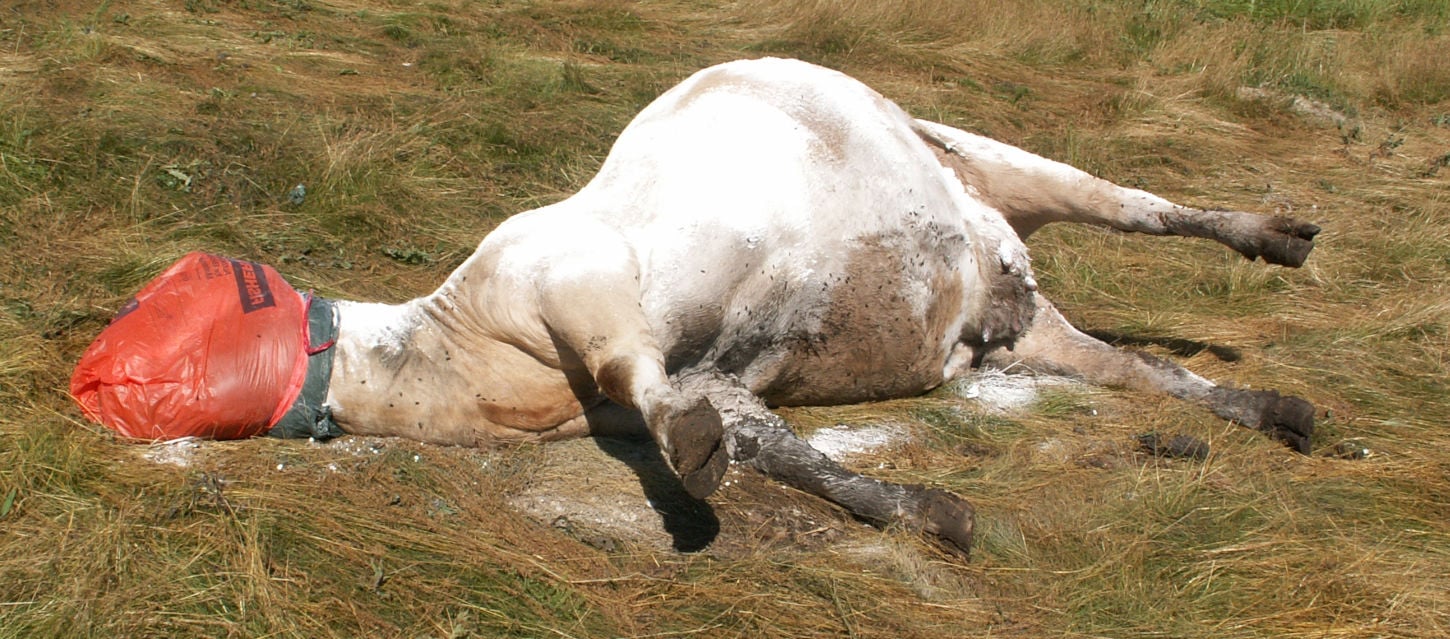
To confirm the hypothesis that the primary source of exposure to aerosolized B. He worked on the last of these hides on February 12, 2006, and cleaned the workspace on February 15. The man did not take the hides to his home. He transported them in his van to his storage facility workspace, a windowless unit (12 ft×10 ft×30 ft) with no operating air conditioning or window ventilation. On December 20, 2005, after a 3-week trip to Côte d’Ivoire, the patient returned to NYC with four hard-dried goat hides wrapped in a plastic bag. After working on the hides, he usually returned home to his apartment and immediately removed his clothing and showered. The man did not wear any personal protective equipment (e.g., mask or gloves) while working. Making the drums involved soaking hides for 1 hour in water and then scraping hair from the hides with a razor, which reportedly generated a large amount of aerosolized dust in the patient's workspace as the hides dried. The patient made traditional African drums by using hard-dried animal hides (e.g., air-dried until brittle enough to crack) obtained in NYC from importers who primarily sold African goat and cow hides. Interviews were conducted with the patient, his family, and his colleagues. The joint epidemiologic and environmental investigation sought to (1) determine the source of exposure, (2) identify other persons who were exposed and required postexposure prophylaxis, (3) enhance surveillance for additional cases through outreach to the medical community, and (4) provide frequent updates as soon as available and consistent messages regarding risk to the public. As of March 14, the patient remained hospitalized in Pennsylvania.

Anti-PA IgG was detectable in the patient's plasma on February 22 and reached a four-fold elevation above the assay reactivity threshold by February 23, thus confirming seroconversion. Preliminary anti-protective antigen (PA) antibody testing by enzyme-linked immunosorbent assay was below the lower limit of quantification of the assay, 2 consistent with early infection. 1 Isolates were susceptible to all antimicrobials tested. anthracis genotype 1 by multiple-locus variable-number tandem repeat analysis. On February 22, CDC identified the isolate as B. Isolates were sent to the PDOH laboratory and confirmed on February 21 as Bacillus anthracis by polymerase chain reaction and susceptibility to lysis by gamma phage. All four blood culture bottles grew gram-positive rods. On February 17, the patient was transferred to a tertiary care center because of worsening respiratory status. A chest radiograph revealed bilateral infiltrates and pleural effusions. He collapsed later that evening with rigors and was admitted to a local hospital, where he reported a 3-day history of shortness of breath, dry cough, and malaise. On February 16, the patient had traveled from NYC to northern Pennsylvania for a performance with his dance troupe. This report summarizes the joint epidemiologic and environmental investigation conducted by local, state, and federal public health, animal health, and law enforcement authorities in Pennsylvania and NYC to determine the source of exposure and identify other persons who were potentially at risk. On February 21, 2006, the Pennsylvania Department of Health (PDOH) reported to CDC and the New York City (NYC) Department of Health and Mental Hygiene (DOHMH) a case of inhalation anthrax in a man who resided in New York City. Shared Decision Making and Communication.Scientific Discovery and the Future of Medicine.



 0 kommentar(er)
0 kommentar(er)
